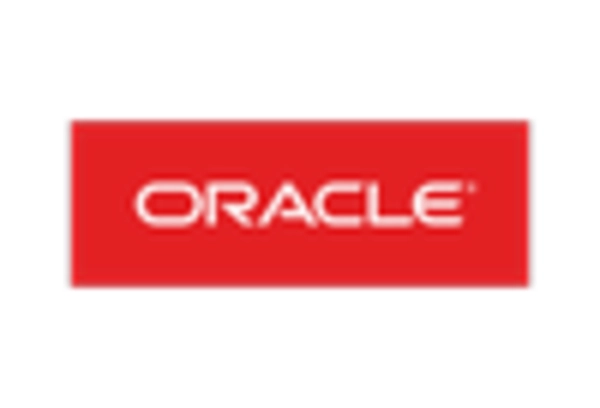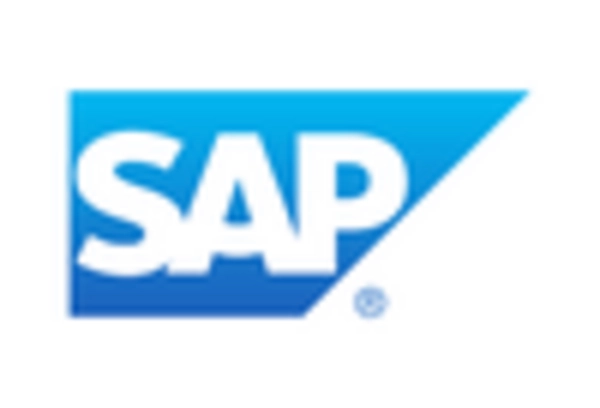The asset tracking-software market in South America is characterized by a dynamic competitive landscape, driven by increasing demand for operational efficiency and real-time asset visibility. Key players such as Zebra Technologies (US), Trimble Inc. (US), and Honeywell International Inc. (US) are strategically positioned to leverage technological advancements and regional growth opportunities. Zebra Technologies (US) focuses on innovation through the development of advanced RFID solutions, while Trimble Inc. (US) emphasizes its expertise in geospatial technology to enhance asset tracking capabilities. Honeywell International Inc. (US) is actively pursuing partnerships to integrate IoT solutions into its offerings, thereby enhancing its competitive edge. Collectively, these strategies contribute to a robust competitive environment, fostering innovation and collaboration among market participants.
In terms of business tactics, companies are increasingly localizing manufacturing and optimizing supply chains to better serve the South American market. The competitive structure appears moderately fragmented, with several players vying for market share. However, the influence of major companies is significant, as they set industry standards and drive technological advancements. This competitive dynamic encourages smaller firms to innovate and differentiate their offerings, thereby enhancing overall market competitiveness.
In October 2025, Zebra Technologies (US) announced the launch of its latest asset tracking platform, which integrates AI-driven analytics to provide users with predictive insights into asset utilization. This strategic move is likely to enhance customer engagement and retention, as businesses increasingly seek data-driven solutions to optimize their operations. The introduction of such advanced technology positions Zebra as a leader in the market, potentially reshaping customer expectations and competitive benchmarks.
In September 2025, Trimble Inc. (US) expanded its partnership with a leading logistics provider to enhance its asset tracking capabilities across supply chains in South America. This collaboration is expected to streamline operations and improve visibility for clients, thereby reinforcing Trimble's market position. The strategic alliance not only broadens Trimble's service offerings but also aligns with the growing trend of integrated solutions in the asset tracking sector.
In August 2025, Honeywell International Inc. (US) launched a new suite of IoT-enabled asset tracking solutions tailored for the South American market. This initiative reflects Honeywell's commitment to digital transformation and its recognition of the region's unique challenges. By offering tailored solutions, Honeywell aims to capture a larger market share and address specific customer needs, thereby enhancing its competitive stance.
As of November 2025, the asset tracking-software market is witnessing trends such as digitalization, sustainability, and AI integration, which are reshaping competitive dynamics. Strategic alliances are increasingly prevalent, as companies recognize the value of collaboration in enhancing technological capabilities and market reach. Looking ahead, competitive differentiation is likely to evolve, with a shift from price-based competition to a focus on innovation, technology, and supply chain reliability. This transition underscores the importance of adaptability and forward-thinking strategies in maintaining a competitive edge in the asset tracking landscape.
















Leave a Comment